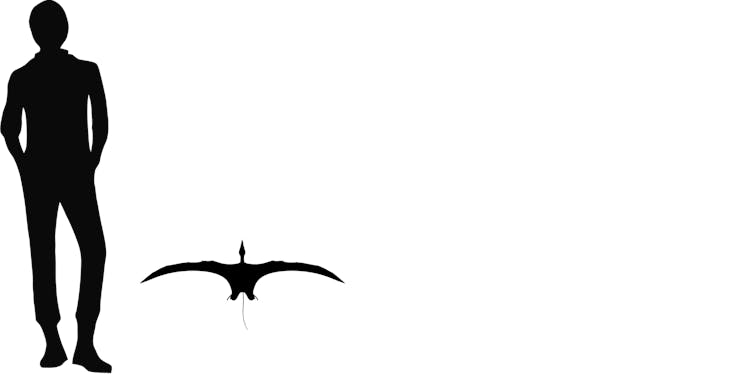


Discovered in the early 1970s in Cene, near the city of Bergamo in northern Italy, the holotype and best-known specimen shows what is generally suspected to be the earliest available bauplan, and thus close to the ancestral condition.
Eudimorphodon is known from the Calcare de Zorzino and Argiliti di Riva Solto Formations. They are both made up of brown and gray shales, deposited at river margins and in anoxic, unperturbed waters, such as lagoons. Many similar taxa are known from both formations.
Its name means "two [truly different] forms of teeth." This is an alusion to the previously named pterosaur Dimorphodon. Compared to Dimorphodon, which merely has two different sizes of teeth – large front teeth for snaring, smaller rear teeth for tearing -- Eudimorphodon has smaller rear teeth that were also complexly cusped, being "heterodont" in a matter typical of early whales.
With a wingspan of about 1 meter, Eudimorphodon was typical of many early pterosaurs, including having a long bony tail, large head with a short neck, and relatively short hand bones. This bauplan is thought to be what is seen in the pterosaur common ancestor.
The skull was long and triangular, superficially resembling many birds. The ends of the jaws were tipped with large triangular teeth. Following those large teeth were many very small, three-cusped teeth. In the middle of the three-cusped tooth row on the upper jaw were two very large teeth.
The different tooth types suggests they were used for different functions. One specimen contained remains of the fish Parapholidophorus, a fish almost half as long as Eudimorphodon's wingspan. Therefore, Eudimorphodon like many early pterosaurs has been suggested to be a piscivore. It's possible that it would have preferred many types of prey or scavenged, as modern coastal birds like gulls and terns do today.
Currently, it is accepted there is merely one species, E. ranzii. Several other species have been named or suggested but many have been moved to other genera. Eudimorphodon cromptonellus is now Arcticodactylus; E. rosenfeldi, is now Carniadactylus; and E. sp., from the same region as E. ranzii, has been recognized as Bergamodactylus wildi or as a specimen of Carniadactylus.
Its relatives include the crested forms Austriadactylus and Caviramus, suggesting that the sometimes unmineralized midline crest of some early pterosaurs such as Pterodactylus may be present in Eudimorphodon, though no bony ridge supports it. All of these taxa would have been about the same size. A specimen from the Late Triassic Dockum Group in Texas suggests an Eudimorphon-like form present there.
